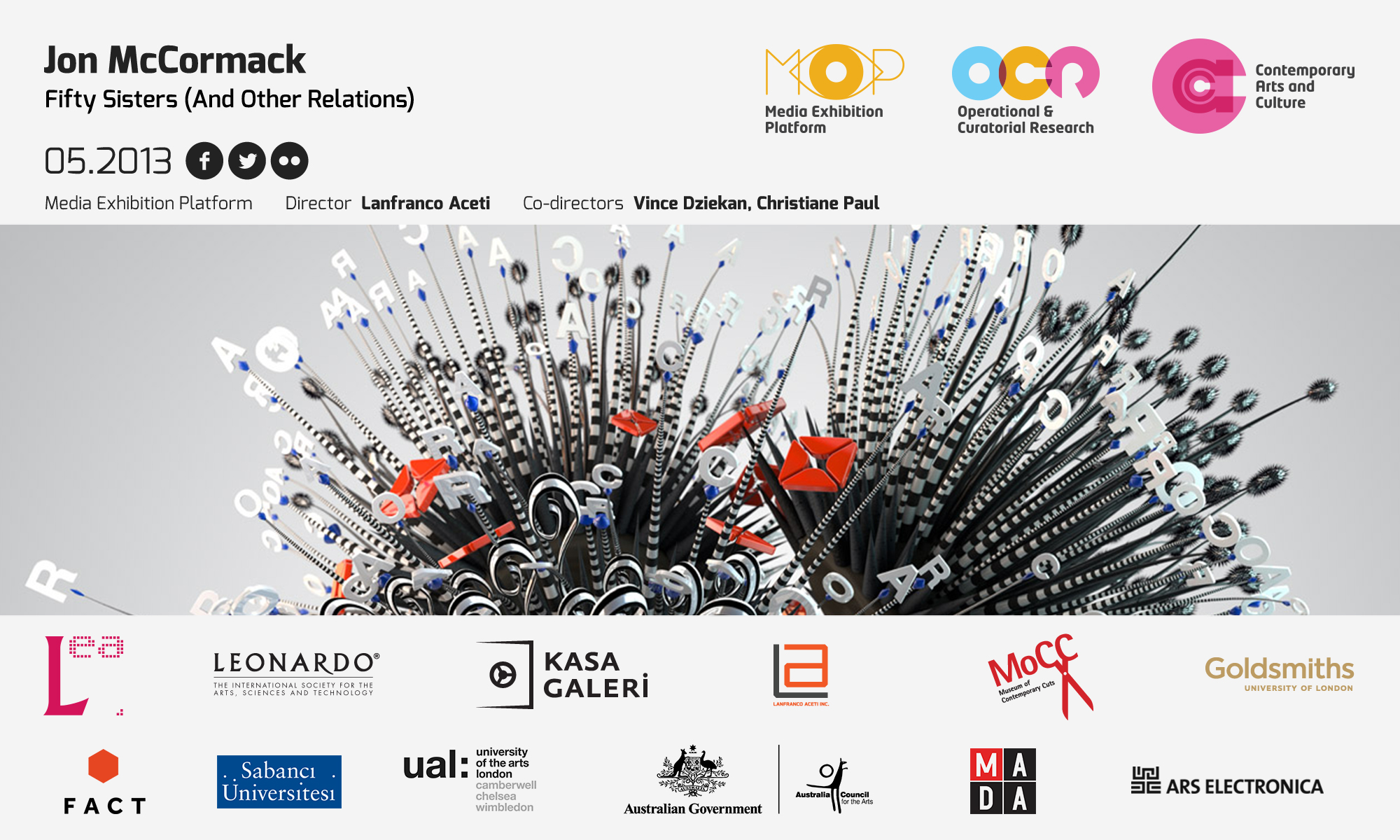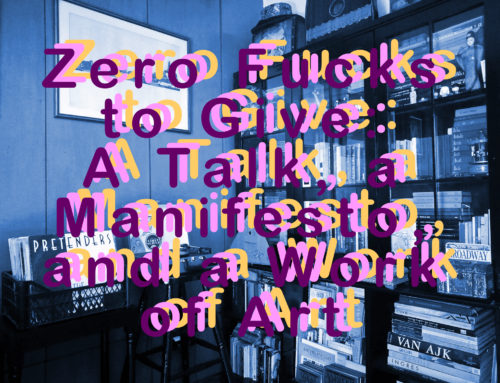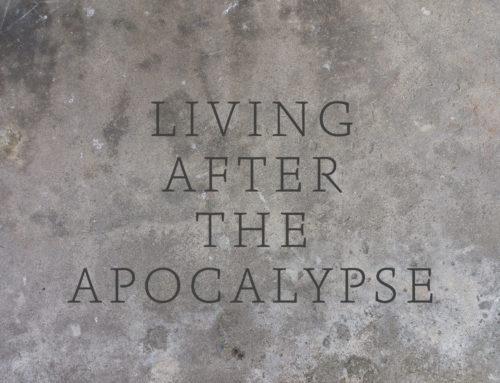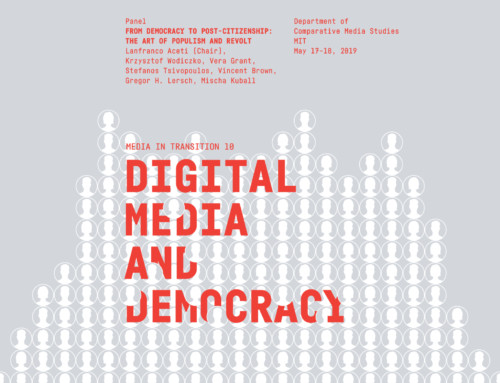Fifty Sisters (And Other Relations) by Jon McCormak is the new exhibition by MEP (the Media Exhibition Platform) in collaboration with LEA (the Leonardo Electronic Almanac). Senior Curator Lanfranco Aceti, with Vince Dziekan and Christiane Paul. Jon McCormack’s Fifty Sisters is a series of images algorithmically “grown” from computer code using artificial evolution and generative grammars. Each plant-like form in the series is derived from deconstructed graphic elements derived from oil company logos. The title of the work refers to the original “Seven Sisters” – a cartel of seven oil companies that dominated the global petrochemical industry and Middle East oil production from the mid-1940s until the oil crisis of the 1970s.
Oil has shaped our civilisation and driven its unprecedented growth over the last century. Fossil fuels began as plants that over millions of years were transformed by geological processes into the coal and oil that powers modern civilisation. To create this artwork, a variety of “digital genes” (a computer equivalent of DNA) were crafted to replicate the structure and form of plants from the Mesozoic Age, the geologic period when oil deposits began to accumulate. These digital genes were used to “grow” imaginary plant species in the computer, being then subject to evolutionary processes of mutation and selection. Through a process akin to selective breeding, new and exotic species were evolved. The geometric elements of these digital organisms were derived from the geometric abstractions of oil company logos, which often subtly reference plants and the environment. In the final images, some or the original elements remain quite obvious, others are so strangely distorted or changed by evolution, that they are only subliminally recognisable.
Reminding us that the current predominance of oil commerce originated from plants, McCormack’s Fifty Sisters – and his more recent extension of the work, which playfully situates computer-rendered oil company logo elements in real photographic landscapes – generates a multitude of allusions: to the world economy’s dependency on oil, to the all-pervasiveness in everyday life of oil-based products like plastic, to the natural resource petroleum, and to environmental destruction on a massive scale caused by drilling and transporting oil.
The work is currently on semi-permanent display in the museum foyer at Ars Electronica in Linz, Austria. Together with Codeform (a virtual ecosystem running in the museum’s Deep Space environment through until September 2013), these new works were developed at the Ars Electronica FutureLab as part of the Australian Artist-in-Residence program, which was initiated and produced by Novamedia in partnership with the Australia Council for the Arts and Ars Electronica. The artist acknowledges the generous support of these organisations, along with Monash University and the Australian Research Council (Discovery Project DP1094064), in realising this work.
Director:
Lanfranco Aceti
Director and Senior Curator, Kasa Gallery
Founder and Director, Media Exhibition Platform
Co-Directors:
Christiane Paul
Curator of New Media Arts at the Whitney Museum of American Art
Vince Dziekan
Monash Art Design + Architecture
Featured Artist:
Jon McCormack is an Australian-based electronic media artist and researcher in computing. He is currently Associate Professor in Computer Science, an ARC Australian Research Fellow and co-director of the Centre for Electronic Media Art (CEMA) at Monash University in Melbourne, Australia.
Since the late 1980s McCormack has worked with computer code as a medium for creative expression. Inspired by the complexity and wonder of a diminishing natural world, his work is concerned with electronic “after natures” – alternate forms of artificial life that may one day replace the biological nature lost through human progress and development.
His artworks have been widely exhibited at leading galleries, museums and symposia, including the Museum of Modern Art (New York, USA), Tate Gallery (Liverpool, UK), ACM SIGGRAPH (USA), Prix Ars Electronica (Austria) and the Australian Centre for the Moving Image (Australia). He is the recipient of 16 awards for new media art and computing research including prizes at Ars Electronica (Austria), Images du Futur (Canada), New Voices, New Visions (USA), Alias/Wavefront (USA), The John Lansdown Award for Interactive Media (Europe/UK), Nagoya Biennial (Japan) and the 2012 Eureka Prize for Innovation in Computer Science. The monograph, Impossible Nature: the art of Jon McCormack, was published by the Australian Centre for the Moving Image in 2005 and documents McCormack’s creative achievements over the last 15 years.
To stay informed please subscribe to our newsletters: https://lanfrancoaceti.wpengine.com/newsletters






